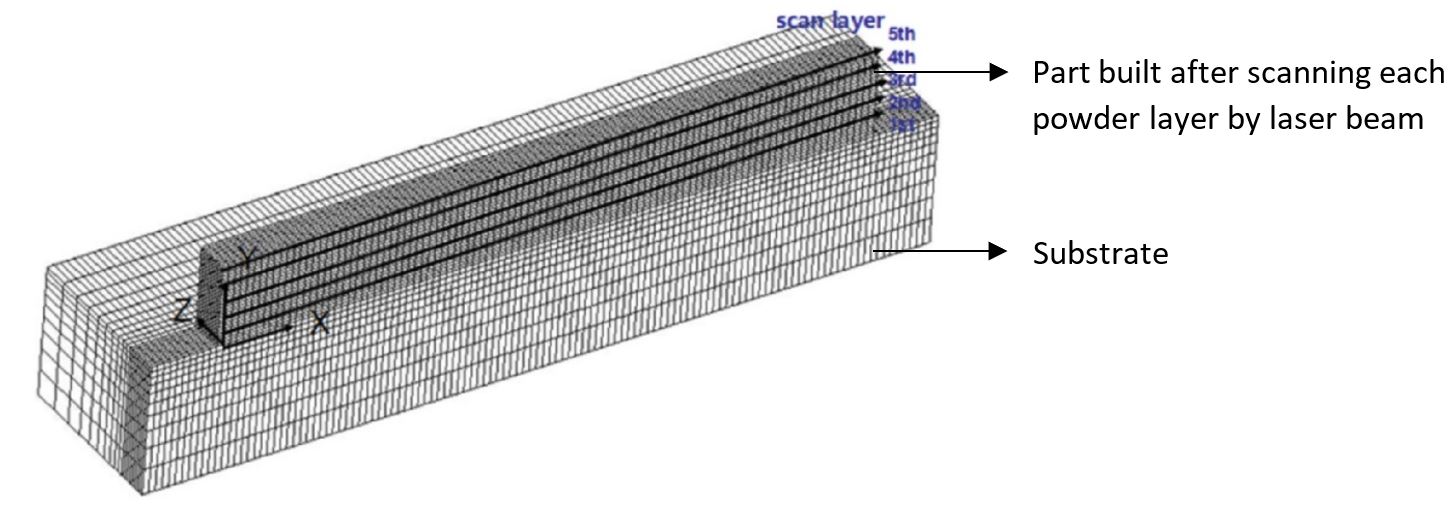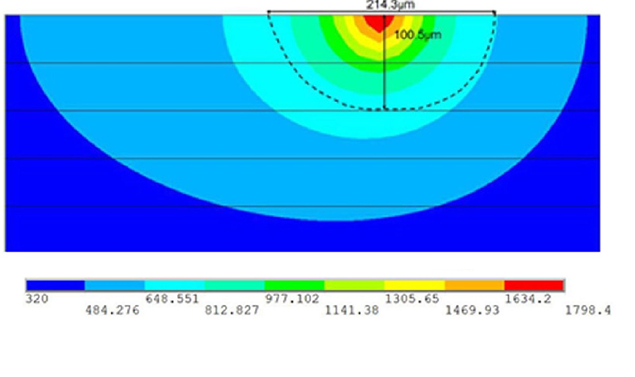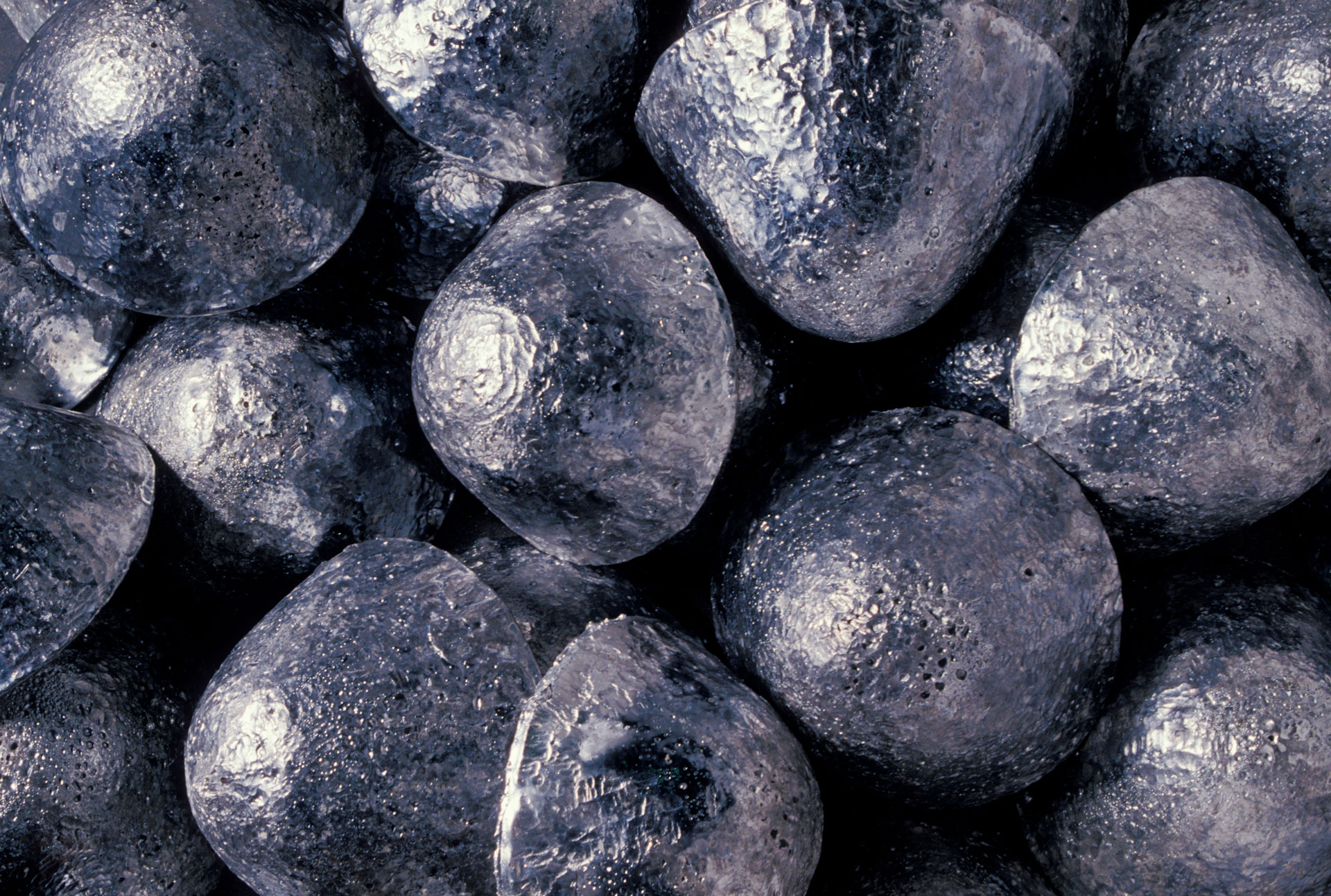Muhammad Azhar Shahzad
Most cutting-edge additive manufacturing processes involve complex thermal phenomena and a large number of controlling process parameters that collectively dictate the final product quality, i.e. its microstructure & mechanical properties. However, it is time consuming and expensive to investigate the correlations between these process parameters and quality metrics through experimentation. Therefore, the aim of this research is to develop a thermal finite element model for the additive manufacture of aluminium alloy AlSi10Mg during multilayer deposition via the laser powder bed fusion process. This will be used to predict the temperature history for developing the above correlations.
 Figure 1. A schematic representation of solution domain [1].
Figure 1. A schematic representation of solution domain [1].
In this research, a transient thermal finite element model will be developed using the commercial package Abaqus. Elements will be activated/‘born’ as the heat source moves along the part, and the temperature field will be tracked over the addition of multiple layers to build a complete thermal history prediction for the part. These results will include the heat-affected zone (HAZ), i.e. regions of the part that experience rapid heating and cooling followed by reheating and recooling as the layers above them are deposited & fused. It will also investigate the impact of heat flux on the microstructure of the HAZ. In the final analysis, the temperature field of the solidifying part will correlate microstructure evolution with localised thermal history, leading to a predictive model for the local part properties given the local thermal history (process parameter values) recorded during the part’s build. The results of the transient thermal simulations will furthermore be validated against experimental work.
This project is conducted in conjunction with CSIRO.
 Figure 2. Temperature distribution during multilayer laser powder bed fusion process. Different colours show temperature distribution [1].
Figure 2. Temperature distribution during multilayer laser powder bed fusion process. Different colours show temperature distribution [1].
References
[1] Hu, H., Ding, X. & Wang, L. (2016). ‘Numerical analysis of heat transfer during multi-layer selective laser melting of AlSi10Mg’. Optik, 127(20), 8883-8891, https://doi.org/10.1016/j.ijleo.2016.06.115.

Metal Fabrication
Cold spray, melt pool, friction stir welding, multifunctional coatings for biomedical Mg alloys, visual monitoring of metal powder